What are plaster beacons and where are they used?
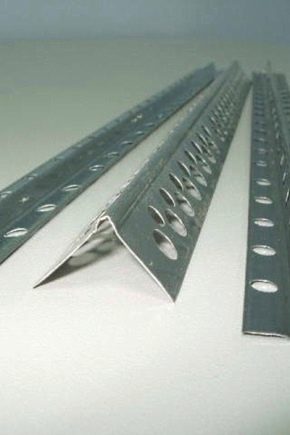
Nowadays, many owners of private houses and apartments are faced with the problem of uneven walls. Such defects are especially noticeable in the corners. This can make rooms look less inviting, and furnishing can be problematic. In many cases, plaster is used to level the walls. It is most convenient to apply it on such bases with the use of elements such as lighthouses. Let's consider in more detail the features of this process.
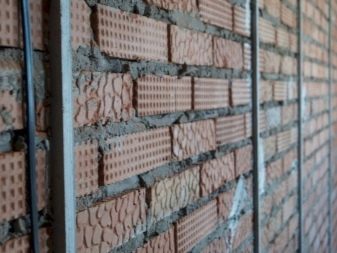
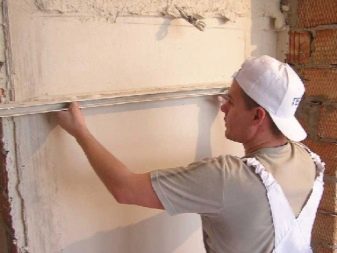
Peculiarities
In most cases, the walls must be properly leveled before applying paint, wallpapering or laying tiles, otherwise the cladding simply will not stay securely in place. Many home and professional craftsmen use high-quality plaster mixes to solve this problem. It is recommended to apply them on uneven or cracked walls using special beacons.
To begin with, let's answer the main question - what are plaster beacons. These elements are used when it is necessary to make the walls even or hide cracks on them. Based on the position of the beacons, the builder applies plaster to the base, thereby leveling out any irregularities and differences.

Most often, beacons are installed along the entire length of walls requiring plastering. For this reason, the fasteners at their two ends would be too small to fit snugly against the base. This feature explains the fact that plaster beacons are fixed at several points at once.
It should be borne in mind that beacons should be installed on walls with large cracks only after identifying the main reason for the appearance of such defects. The source of the destruction of the floors must be eliminated. In some cases, you have to turn to reinforcement.
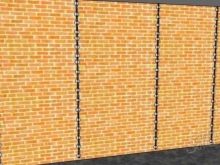
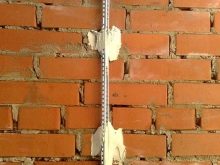
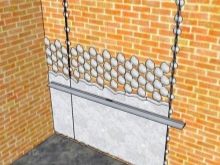
Too large depressions and technological holes on the walls must first be repaired before installing the beacons. As a rule, the same building mixtures are used for this, which will later be used for plastering the bases.
Plaster beacons are made from different materials. They can also vary in size, length and shape. Thanks to such a rich selection, it will be possible to choose the right elements for any wall ceilings and their individual sections. In addition, the owners can do all the work with their own hands, saving money on contacting specialists.
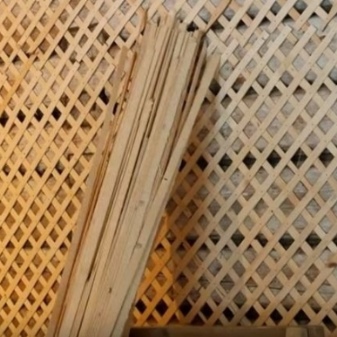
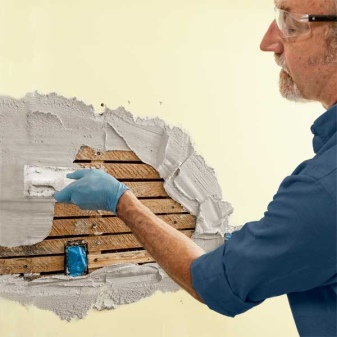
But do not think that lighthouses are used only for wall decoration. You can also refer to these details if you are decorating planes such as floors, ceilings or slopes. In all cases, beacons will prove to be very useful and convenient components that will allow you to put a layer of plaster quickly and evenly.
Few people know, but beacons are not only factory-made.

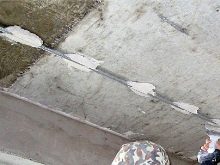
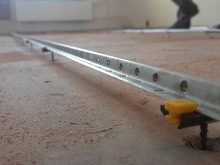
Some home craftsmen make them themselves. Most often, wooden bars act as such lighthouses (they are especially relevant in cases with wooden buildings). Such parts are attached to the walls to be finished with self-tapping screws, making the plastering process easier and faster.
More experienced repairmen often turn to the installation of plaster beacons. For this, self-tapping screws are fixed in the required areas. Their caps play the role of a kind of level on which the solution is subsequently applied.
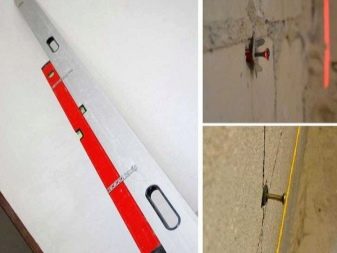
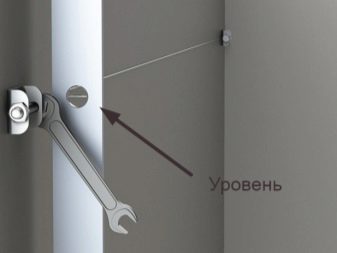
Views
As mentioned above, today, when applying plaster to floors, different types of beacons are used. Each type of these landmarks has its own characteristics that must be considered before starting work. Let us consider in detail what are the distinctive features of different types of plaster beacons.
To begin with, let's consider what properties beacons made of different materials have.

Metallic
Iron
Iron beacons are among the most common and sought after. Modern manufacturers make them in the form of perforated platforms with a strong rounded top. As a rule, these structures are covered with zinc, therefore, being under the plaster, they do not corrode. The installation of these types of beacons is carried out using fasteners and a quickly solidifying gypsum mixture.
Let's dwell on the main advantages of iron beacons.
- Many owners turn to just such elements, since they have a low cost.
- Iron beacons are found in many hardware stores - you don't have to look for them all over the city.
- It is very easy to work with such elements. The main thing is to adhere to the instructions.
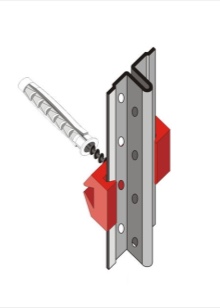
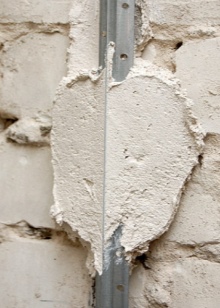
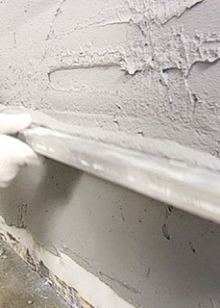
However, modern galvanized beacons made of iron have their drawbacks.
- The most common disadvantage of such products is geometry deformation. This problem can arise both when certain standards are violated during production, and when transporting or storing improperly. For this reason, it is important to carefully inspect for damage or deformation before purchasing beacons.
- In some cases, after all the work has been done, ugly rusty stripes appear on the walls. Such problems arise as the zinc present on the surface of the iron begins to break down and oxidize. In order not to encounter such disadvantages, it is advised to clean the beacons immediately after finishing the floors.
- Another disadvantage of such parts is that they are highly flexible. Because of this, during their installation, it is necessary to create conditions to guarantee the rigidity of the guides, for example, to fill the surface under the beacons.
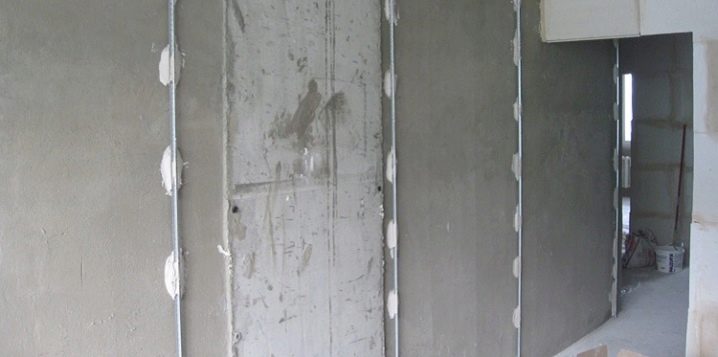
Steel
Steel varieties of plaster guides are reusable. Most often they are used by experienced craftsmen. You can use such elements many times, thereby recouping the costs incurred for their purchase.
The main advantages of steel guides.
- Such a beacon profile has excellent strength characteristics.
- Steel guides are very rigid, so it is permissible to install them without worrying about possible deformation. For this reason, such elements need to be fixed only in certain places.
- You can use these guides multiple times.
Steel beacons have no serious drawbacks, however, they have their own "weaknesses".
- They are expensive (more expensive than simple metal pieces).
- They can be broken or damaged if removed after the plaster is completely dry.


Plastic
The second most popular are plastic beacons.
In many respects, they are similar to metal versions, but they have a number of distinctive features.
- They are made from reliable and high-strength plastic.
- No experience or special knowledge is required to install them. All work is easy and hassle-free.
- These elements retain their original geometry. After slight deformations, plastic beacons return to their previous appearance. For this reason, there is no reason to worry about what will "lead" them over time.
- Plastic is a material that is not susceptible to oxidation and rust. Rusty streaks and stains will definitely not appear on walls with similar plastic beacons.
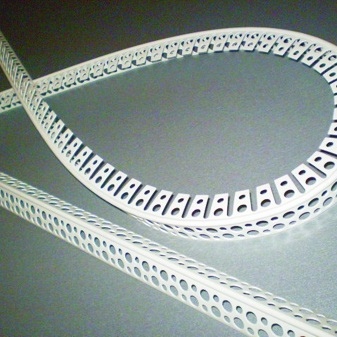
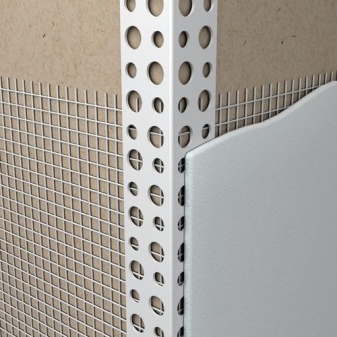
Unfortunately, plastic beacons have a number of disadvantages. Let's consider them.
- Such details should not be addressed if you are doing outdoor decoration.This is because plastic sometimes breaks in low temperatures.
- The material from which such beacons are made is not designed for impressive external loads, for example, impacts. Under their influence, they will simply break.
- If the plastic guides are incorrectly mounted, then they can bend when pressed by the rule, which will provoke deformation of the finished base.
- Be aware that plastic rails made from cheap and toxic material can leave dark spots on the finished surface if not removed at the end of the work. It can be impossible to get rid of such defects in the finish.
Lighthouses differ from each other not only in materials. Consider what other guides are for plastering bases.

Homemade
As mentioned earlier, plaster beacons are not only factory-made, but also home-made. They are cheap for the craftsmen, and their creation cannot be called too complicated. For self-production of beacons, people usually use a metal corner or pipe. Of course, it is permissible to refer to other suitable objects that have a similar structure. For example, it can be wooden slats. However, they are not used as often because of their susceptibility to deformation.
It should also be noted that when using home-made bases, the consumption of plaster usually increases. As a result, finishing costs also increase. There is another popular option for homemade lighthouses - a metal profile for drywall. These landmarks are the cheapest. Suitable for cases where a thick layer of plaster is required.
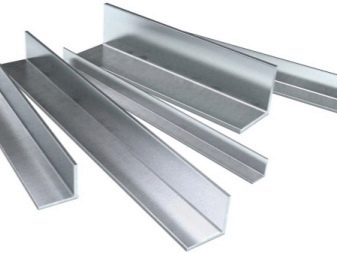
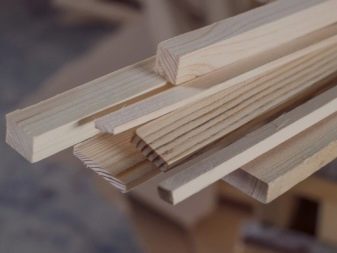
Strings
There are also special string beacons.
They are cheap and they are made like that.
- First, self-tapping screws, a perforator and wire are prepared.
- Then, using a perforator, holes are drilled into which the dowels will be inserted.
- Self-tapping screws must be screwed into the dowels. They should be on the same level. Next, you need to pull the wire.
- Apply a plaster mixture under the wire so that the layer surface is slightly higher than the string.
- When the plaster is slightly dry, the top layer must be cut off. This will give you a reference point by which you will need to align.
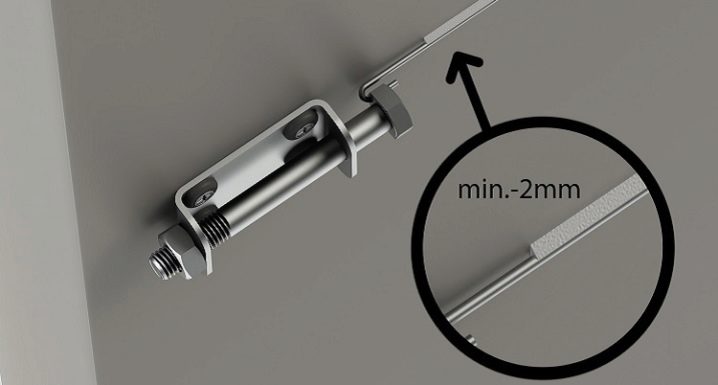
The main advantage of the string beacon is its low cost. Wire is cheap, and almost every craftsman has self-tapping screws at home. In addition, these types of lighthouses are not subject to deformation, such as metal or plastic.
As for the cons, they include the following.
- Craftsmen often carelessly install self-tapping screws. Because of this, the mortar surface can be curved.
- Curvature can also occur if the top plaster layer has been removed incorrectly, resting on the level of the wire.
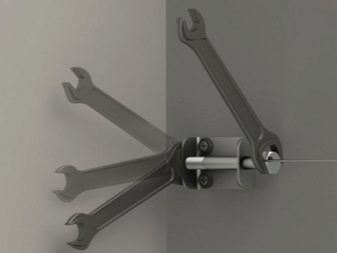
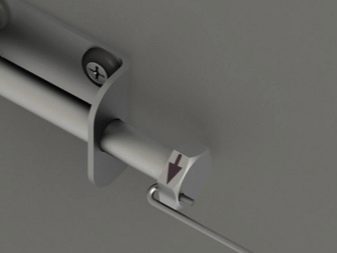
Dimensions (edit)
Plaster beacons can have different dimensions. So, the most common are guides with dimensions of 6 mm x 3 m. Such elements are most often used when laying a plaster layer of 6 - 10 mm.
There are also lighthouses with dimensions of 10 mm x 3 m.If you use parts that have such a width and height, you can lay the plaster with a layer of more than 1 cm.
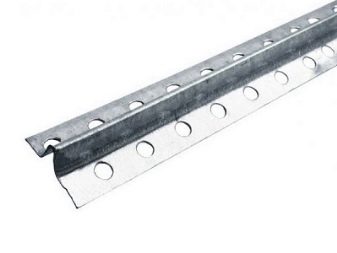

How to do it yourself?
Today, many DIYers are turning to homemade plaster beacons. You can make them in different ways. Let's take a look at a few of the most common options.
So, to create a long beacon that is suitable for walls, and for the floor, and for the ceiling, you need to stock up on a long level or a perfectly flat profile, rail. It is recommended to enlist an assistant for such work. Then one person will hold the rail on which the level stands, and the second person will be responsible for laying the mortar along the length of the rail. Also, for the organization of this lighthouse, it is recommended to add asbestos or alabaster to the plaster.This is due to the fact that a dense layer of the mixture will dry out a little longer than usual.
First, you will need to lay the mortar on a level along the entire plane of the base, mark the last point and work, starting with the first. Put the rail and put the mixture under it.
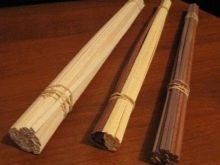
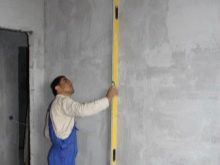
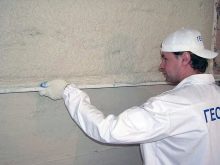
Short homemade beacons are made according to the same principle. However, they must be made 30 - 50 cm each and installed in a checkerboard pattern. As a rule, such elements are addressed when it is necessary that the meter and half-meter rule be enough for the entire interval between the beacons.
You can also set up beacons yourself using self-tapping caps. So, fasteners are installed on the line drawn and verified by the level. Based on the location of their caps, plaster is applied. To do this, use a spatula or a wooden block that presses the solution to the fasteners. This type of beacon does not need to be removed after all the work has been done.
You can also make string beacons with your own hands. To do this, you need to install several self-tapping screws and pass a wire between them.
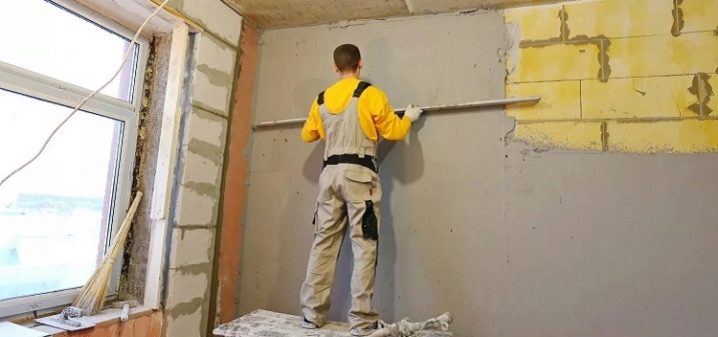
Subtleties of installation
Before fixing the lighthouses under the plaster, it is necessary to mark the base. In this case, you can rely on various techniques.
Let's take a closer look at the simplest way to mark the floor for mounting guides.
- First, make an indent from the corner of 30 cm (15 cm from the floor and ceiling).
- Draw a vertical strip, check it with a level, and then repeat this operation, but on the opposite side.
- Now you need to measure the gap between the drawn lines and divide it by 1.5 m. The resulting number will indicate the required number of beacon guides. The elements must be cut so that they are 30 cm shorter than the ceiling height.
- At the points of the lines below and above, holes must be drilled to install the dowels.
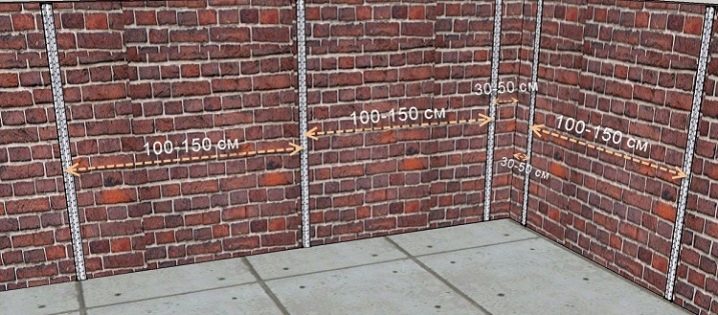
- Now you need to draw out all the wall covering with lines, maintaining a step of 1.5 m.
- Screw the self-tapping screws into the holes. Stretch two threads between the caps. In areas where the rope intersects (like the lines drawn), you also need to make holes and insert dowels with self-tapping screws into them.
- Now adjust the level of the fastener caps. To do this, add up the values of the overlap, the parameter of the thickness of the beacon and leave a small margin (about 0.5 cm). The result will indicate how far the fasteners should move away from the slab.
- Having set the self-tapping screws, you need to pull the threads diagonally and guide the beacons under this plane. Make sure that the thread guides only lightly touch the thread.
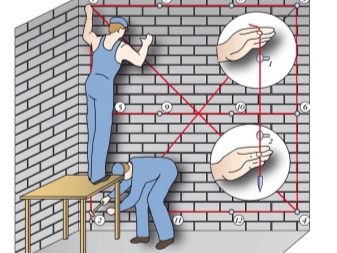
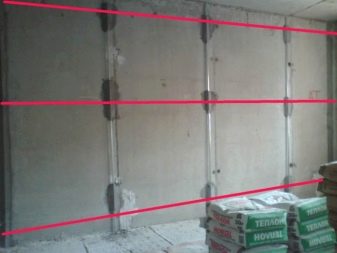
After marking the base, you can proceed to the direct installation of the lighthouse guides.
First, let's look at how to do this with a solution or glue.
- First, prepare the solution. To do this, be sure to use the instructions - it should be on the box. If you want to finish the walls with a cement or lime composition, which takes a very long time to fix, then gypsum or alabaster should be mixed in them.
- Apply the finished compound to the wall in small portions. It must be laid every 15-20 cm, relying on the marked lines.
- Now the profile must be attached to the composition layer and pressed to the base. When using the simplest markings, the beacon must be placed in such a way that it is level with the self-tapping screws.
- Check the alignment of all parts with a spirit level.
- Remove excess solution and proceed to fixing the following parts.
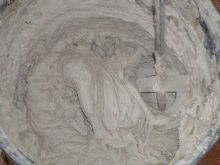
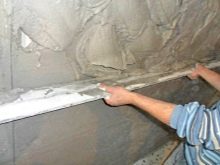
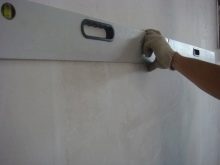
Mounting on fasteners is a little different.
- For fastening beacons, parts called "eared" or clips are used. In this case, for installation, the guides are placed on the caps of the self-tapping screws, previously screwed into the prepared holes (in increments of 30 cm).
- Next, the beacon element is attached and a latch is installed in the desired place.
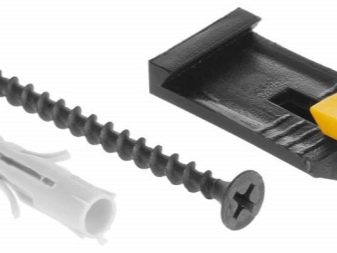
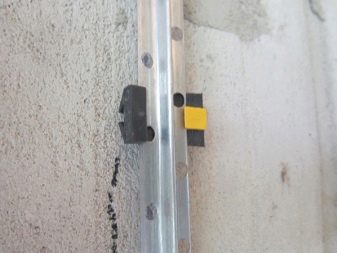
This method is chosen by many masters, as it is simple and fast. However, it must be taken into account that the thickness of the plaster layer will be slightly larger - by 0.5 cm.This will affect the total amount of work performed.
Reviews
Most home craftsmen who decide to plaster the walls in their home on their own speak positively about the use of beacons. In their opinion, the use of such parts greatly simplifies the finishing work, and also allows you to abandon the expensive services of experienced repairmen.
It confuses many people that metal beacons over time can leave rusty stripes on the walls, which will ruin the entire finish. The owners rarely encounter such a problem, but the likelihood of this defect still remains.
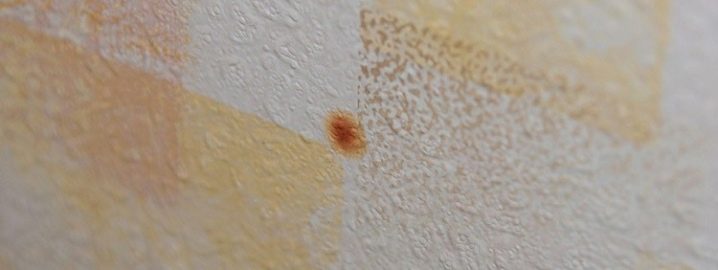
Long beacons are not very convenient to transport, homeowners say. This is especially true for flexible parts that are easily damaged if handled carelessly.
As for the direct work on the installation of lighthouses, then the lion's share of home craftsmen do not see any problems. The main thing is to be careful and always use a level - then the bases will not be crooked and unaesthetic.

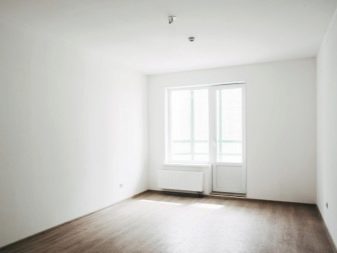
Advice
- If you are looking for beacons for outdoor finishing work, it is better to use thicker and stronger parts, since external walls require the use of materials in large quantities.
- Special fasteners are sold in stores for galvanized and plastic guides. When using them, the beacons hold on much more reliably and stronger.
- Be sure to inspect each beacon holder before purchasing. All elements must be in perfect condition - no kinks or any damage. The use of low-quality parts will ultimately lead to an ugly and curved base surface.
- When decorating corner areas, it is recommended to use comfortable V-shaped beacons. T-shaped elements can act as intermediate components.
- Do not forget that the beacon will be held on the base as tightly and reliably as possible only if you fix it at several points, and not just above and below.
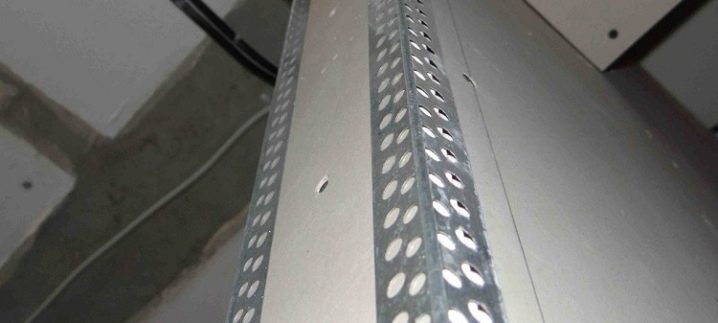
- If you carry out work using cheap home-made lighthouses, then you should consider that then the consumption of plaster will increase significantly. This is due to the fact that the alignment of the base with such guides is carried out using a larger amount of mortar.
- When installing, the first two beacons are recommended to be installed on both edges of the wall ceiling, and only then proceed to fixing the remaining parts. Do not forget that there must be the same distance between them.
- If there are too large and noticeable protrusions on the walls (floor or ceiling), then it will be easier to remove them than to level them. Otherwise, you risk spending a lot of money on a large amount of plaster mix, and such work can be too difficult for a home craftsman.
- If you are afraid to face the deformation of the beacon elements, then you should turn to the string options. These parts are not subject to deformation.
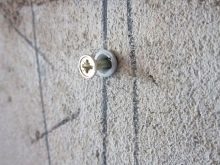
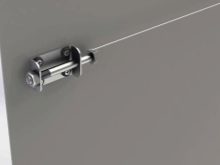
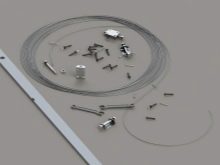
- It is important to remember that the distance between individual beacons should be 15 - 20 cm less than the length of the rule pulling out the plaster layer. If you are finishing the walls with plaster for the first time, then this value should not be more than 0.5 - 1 m. Otherwise, it will be quite difficult for you to cope with the impressive area of the surface to be finished.
- Many craftsmen are wondering whether it is necessary to remove the beacons at the end of the finishing work. If we are talking about metal options, then they can be left on the finished surface only if they are of excellent quality. Poor quality metal parts will oxidize over time, resulting in rust stains on the finish. One way or another, most experts still advise removing the lighthouses.
- When marking the base, you need to take into account the location of the door leaves.If they are planned to be made, then the level of the screed is performed in such a way that it is at a level below the future sill.
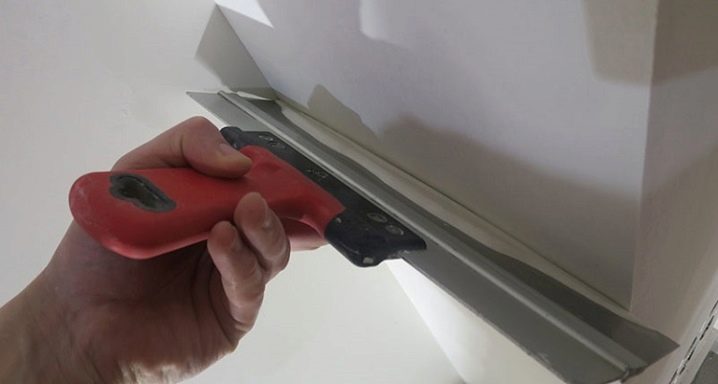
- In the process of finishing the floors, a primer is used. Before installing the beacons, it is very important to wait until it is completely dry. This is because the rails hold much tighter and better on dry surfaces. In addition, if this rule is observed, the plaster layer will not crack and break in the future.
- If you want to save on finishing material, then you should use not very high beacons. For example, when decorating walls in new buildings erected from blocks that are fairly flat, it is permissible not to use these guidelines at all, but in old brick buildings these details simply cannot be done.
Reusable steel beacons are not recommended for home craftsmen for finishing ordinary dwellings, since more often experienced repairmen who regularly carry out such work turn to these elements. Otherwise, the cost of such parts may not be justified.
In the next video, you will find a modern way of high-quality installation of lighthouses under plaster.













The comment was sent successfully.